Light is often switched on or off, hanging from the ceiling, and barely noticed when entering a room. But what if light could move with us? What if it could tilt, rise, fall, and follow our every step? And what if it could reflect our own personal aura, our inner light made visible?
Long before there was any understanding of artificial lighting or lighting design, the ancient Egyptians held a deeper understanding of light, seeing it as a living force and a reflection of a presence alive within all things. And that living force was known as aura.
To them, light was something one carried; an aura that emanates from within, from the body’s own energy centres. Each person’s aura, or inner light, was understood by the ancient Egyptians as a reflection of their essence, because at their core, each person carries their own light.
Many years later, this ancient understanding came full circle at the launch of Spot On by Enlighten, Egypt’s leading name in lighting design for over 18 years. The launch marked the opening of an ongoing exhibition running until the end of November, unveiling Spot On, a new sub-brand that reimagines light as more than function, but as a form of personal expression.
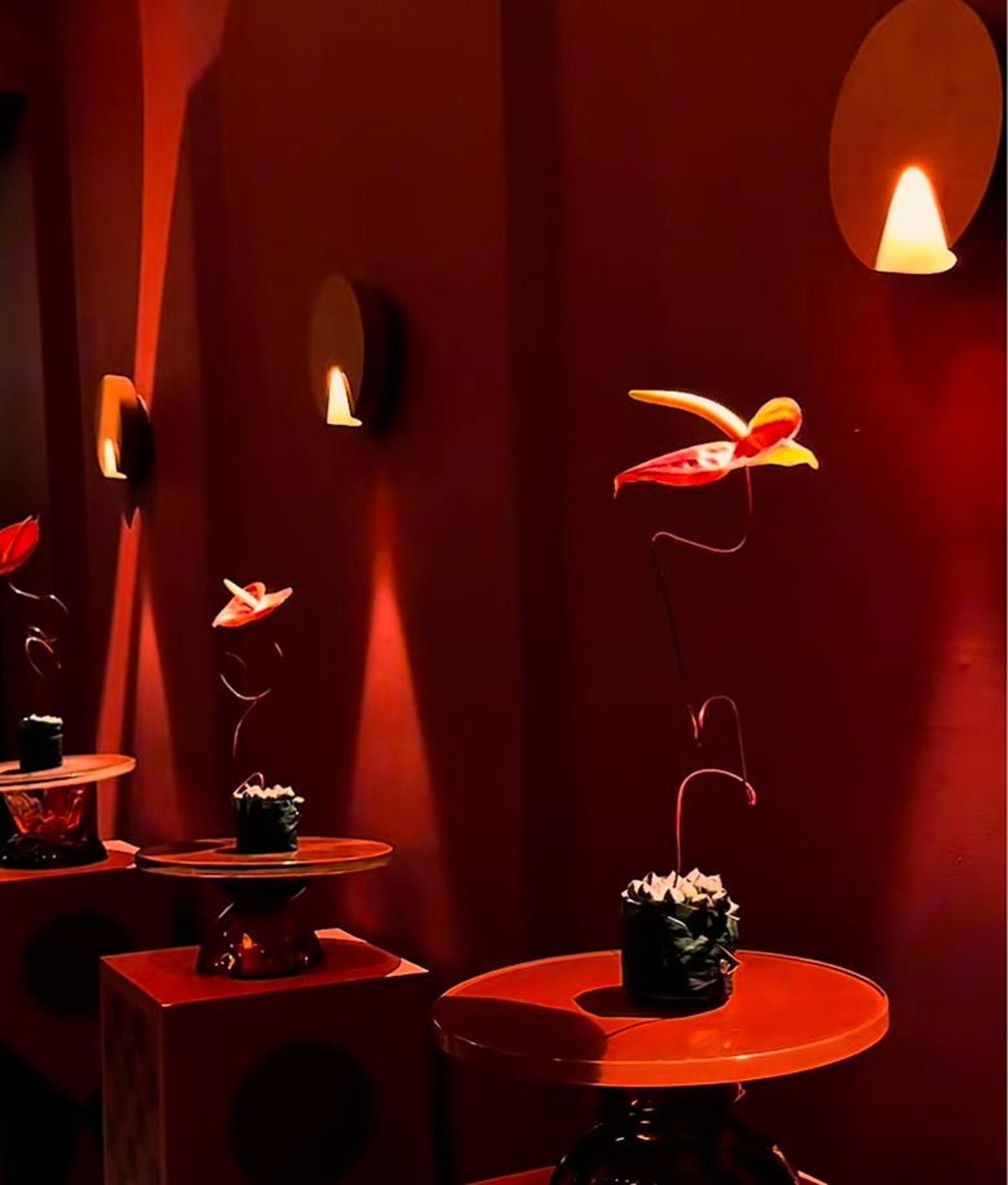
After years of serving retailers and businesses, Spot On is now turning its focus to the consumer. “We’re giving people the power to bring brightness into their lives and to express themselves through light,” Noha Mohsen, founder of Enlighten, tells Egyptian Streets.
“Each of us has our own lifestyle, aesthetic, and environment, and light should reflect that individuality.”
“It’s about taste, about making it your own. That’s what truly matters,” she adds.
A Journey Through Light
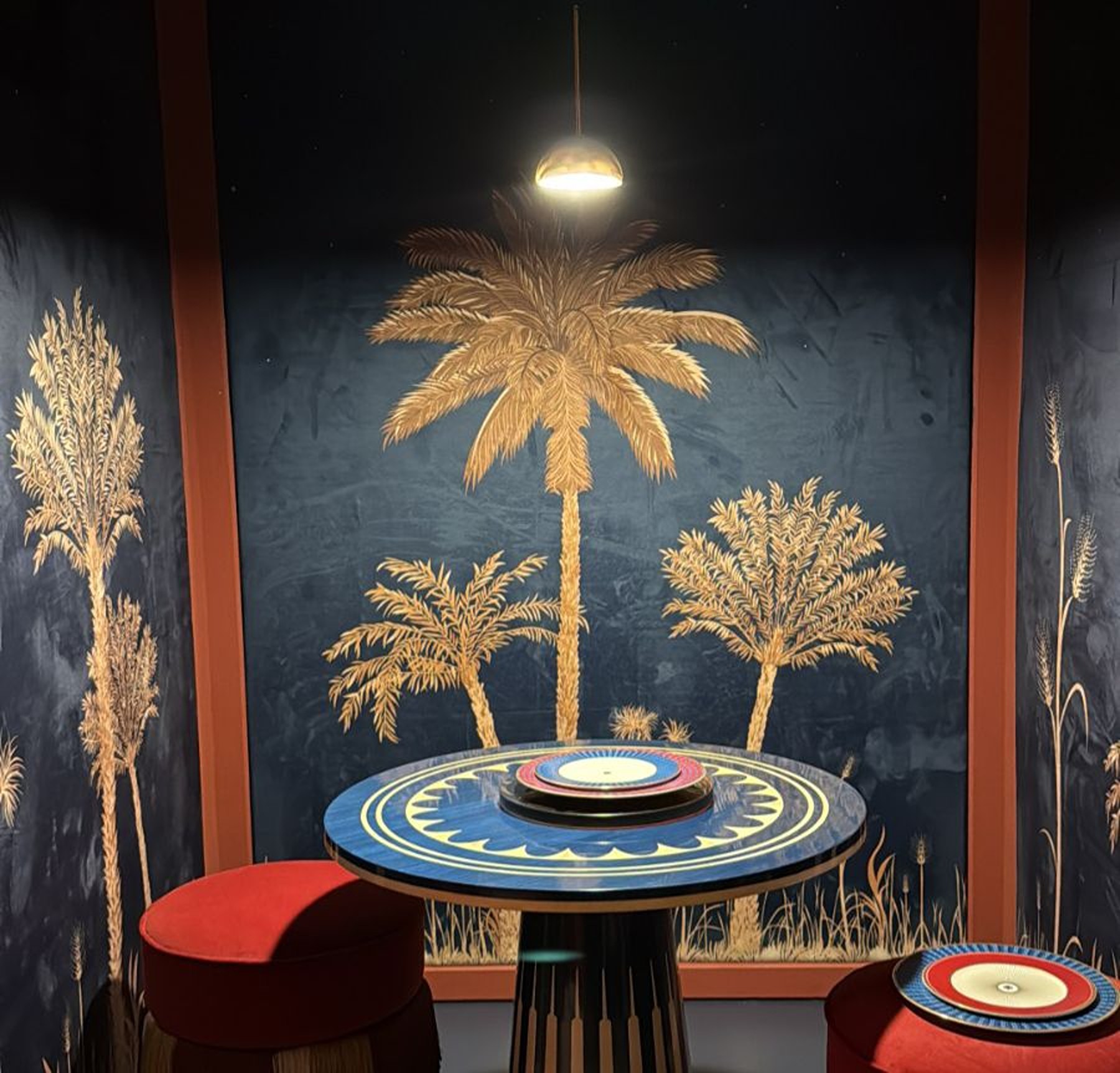
Stepping into the world of Spot On at its launch event in Zamalek at Enlighten’s showroom, every wall and tile had its own personality. The red walls reflected the red focus ceiling lighting, creating an atmosphere that captured the space’s character and felt, in every sense, truly spot on.
Built around five core categories of light: ceiling, wall, floor, table, and outdoor, every Spot On piece is imported using international-grade materials.
“Spot On is especially close to my heart because it is accessible,” Mohsen shares. “These are plug-and-play products, easy to use, easy to personalize, and easy to try out in different spaces. And best of all, they’re available online for everyone.”
Taking place during the same week as the opening of the Grand Egyptian Museum, the launch event was a fully sensory experience, engaging every sense, from the carefully balanced visuals to the handcrafted textures, to the playful shadows and lighting that highlighted the smallest, often overlooked corners of the room.
While the eyes absorbed every detail, the senses of taste and smell were also awakened, with a culinary experience by Catering by Kesmat and floral installations from Florabele, creating a complete, immersive journey for all the senses.
All of these details, and all of these sensory elements, were elevated by one unifying force: the power of light. Light was both the curator and the storyteller, revealing the beauty in every detail, from the delicate patterns of a floral motif to the presence of a Sufi whirling dervish figurine tucked into the corner of an Arabesque-inspired room.
And just as one becomes absorbed in the dance of light and shadow, the lighting guides the gaze toward the exquisite artworks from Zamalek Art Gallery and Le Lab, spotlighting Egyptian artists who merge surrealism with breathtaking color combinations that complement the room’s overall palette.
“I’ve come to realize just how much talent there is in Egypt; it’s truly incredible,” Mohsen says. “When people come together and collaborate, the impact is unbelievable, from creative direction to design to manufacturing.”
“We, as Egyptians, have an innate sense of taste,” she adds. “It’s time the world sees that. We know how to elevate everything around us.”
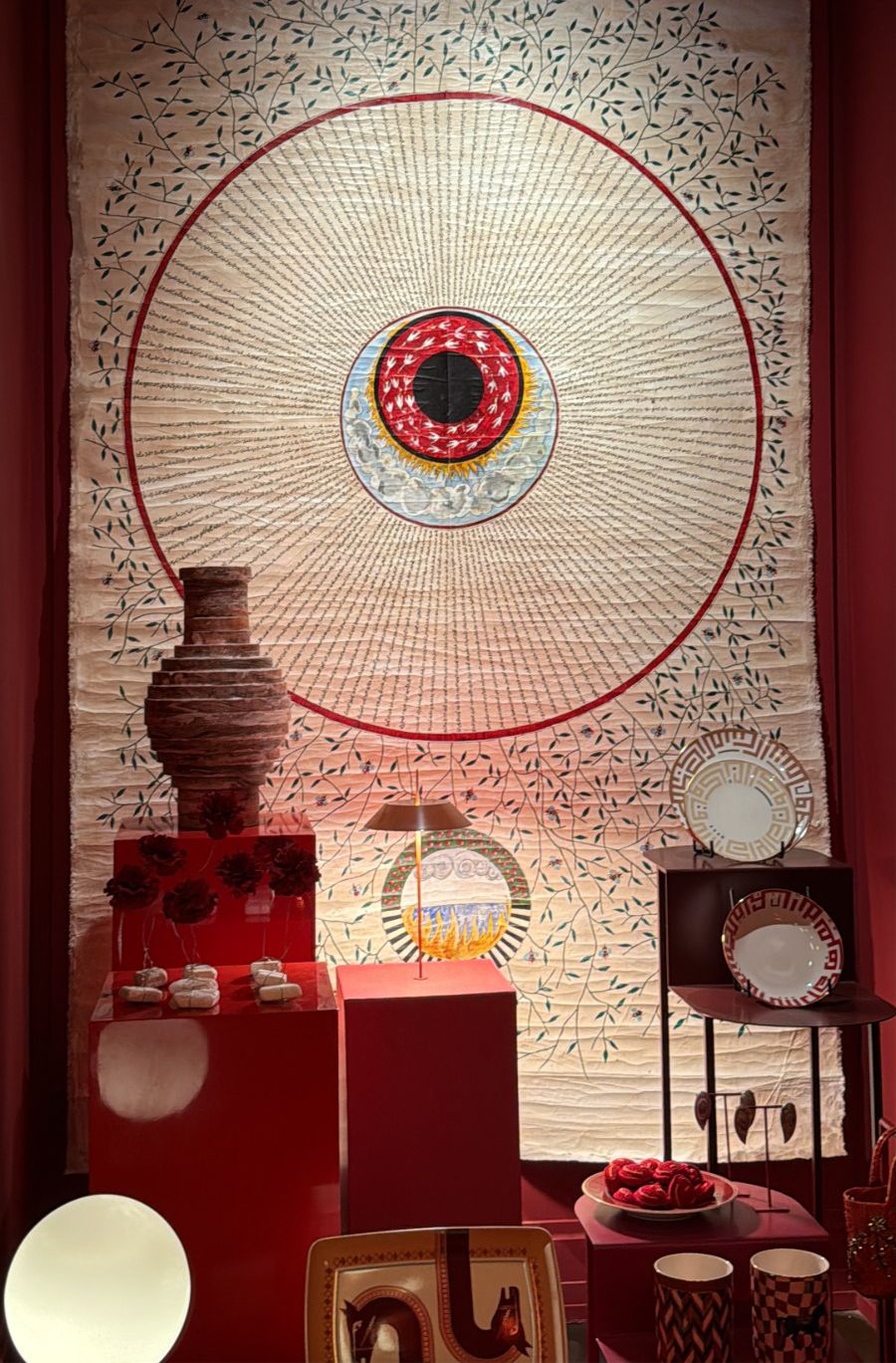
Just as light tied all of these details together, Spot On gathered Egypt’s leading creative designers under one roof, a living symbol of light’s very essence and its ability to unite. Like light, the event connected all of Egypt’s designers, showing how design, at its core, is a shared expression.
Featuring 22 unique vignettes, the exhibition is brought to life through collaborations with some of Egypt’s most prominent design talents and creative brands. Among them are Layers of Life, known for their custom designs across mediums like wallpaper, fabric, glass, and mosaic; Glass Code, a full-service glass company that specializes in glass supply, installations, replacement and maintenance services; Kahhal 1871, the luxury house renowned for its contemporary and heritage hand-knotted rugs; and emerging names like Handmade, a young furniture brand that contributed unique handcrafted pieces and handle swings.
Unlike most design exhibitions that focus on big names, this one stands out by highlighting a mix of both established and emerging design talents. Tamia Tiles, an Egyptian brand specializing in handmade, customizable encaustic cement tiles for indoor and outdoor spaces, were reimagined as floating wall art instead of traditional grids. Meanwhile, Heba Linens, renowned for their classic floral embroidery, were challenged to create geometric and contemporary designs.
While Scandinavian influences have long shaped the design scene, Egypt is experiencing a notable resurgence of its own heritage in contemporary interiors. Designers and brands such as Third Space, INCA & CO., and Scib Paints are honoring traditional Egyptian aesthetics while reinterpreting them through a modern, contemporary lens. At the same time, emerging craftsmanship-focused brands like Rofoof provide culturally rich, artistically meaningful accessories, furniture, and tableware, helping bring Egyptian heritage into today’s culturally modern homes.
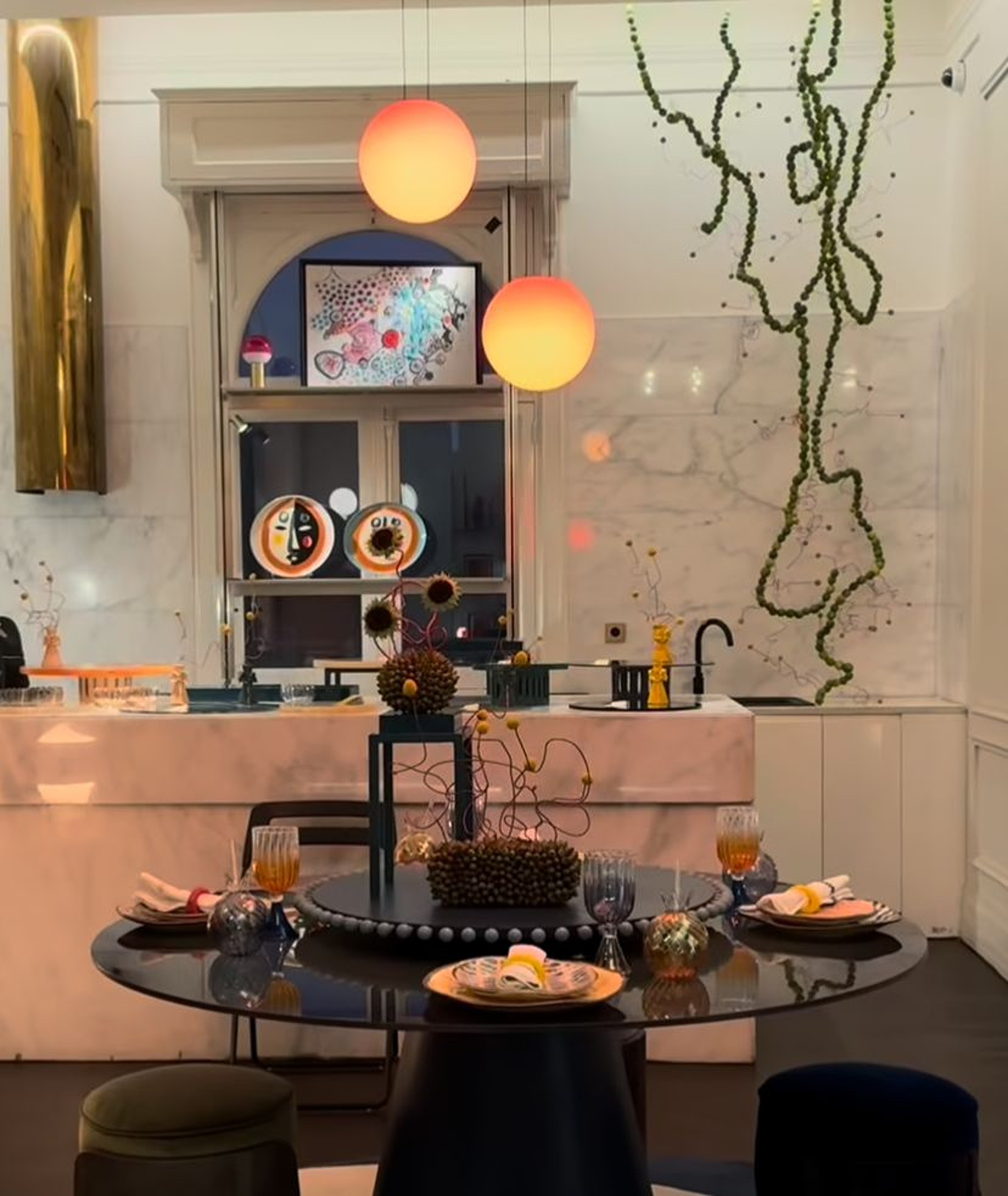
A new wave of innovative and sustainable designers is also showcased, highlighting fresh approaches to creativity and environmental consciousness in Egypt. Among them is Shell Homage, an Egyptian design brand that transforms 100 percent waste materials into meticulously crafted sculptural pieces.
Grounded in Egyptian heritage, one of the sculptural pieces by Shell Homage transforms discarded egg and nut shells into a work of art. Each fragment, hand-shaped and delicately assembled, breathes new life into ancient symbols, turning remnants of the everyday into a poetic reflection on renewal, sustainability, and the beauty of reinvention.
Focusing on the Small Spots
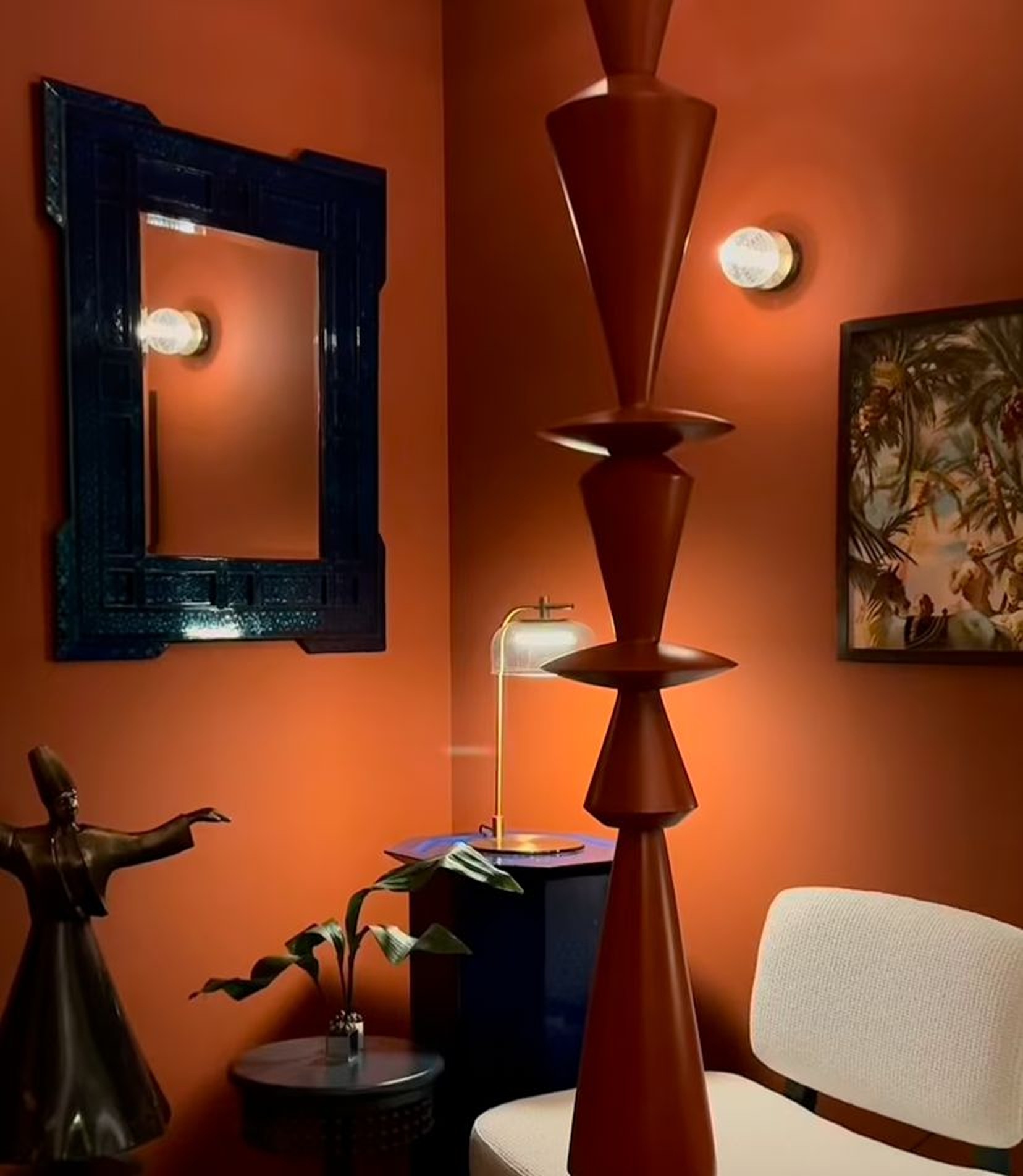
When curating the exhibition, creative director and curator Rana Abou-Zeid centered her vision on the small details in a room, such as the subtle elements that catch the eye, spark reflection, and invite viewers to get lost in the many layers of a space.
“Any space is made up of layers, from layers of lights to layers of textures. And it’s the little details that really matter, like changing your carpet or playing around with the paint and wallpaper,” she explains.
Her approach was to create small vignettes that reflect a range of tastes and lifestyles, from residential spaces like bedrooms and home offices to commercial environments such as cafes or concept stores.
From intricately embroidered bedrooms to serene, minimalist Japanese corners, each space provided a spot for distinct personalities and characters to come alive.
“We wanted to create different small vignettes that would cater to different tastes,” she adds.
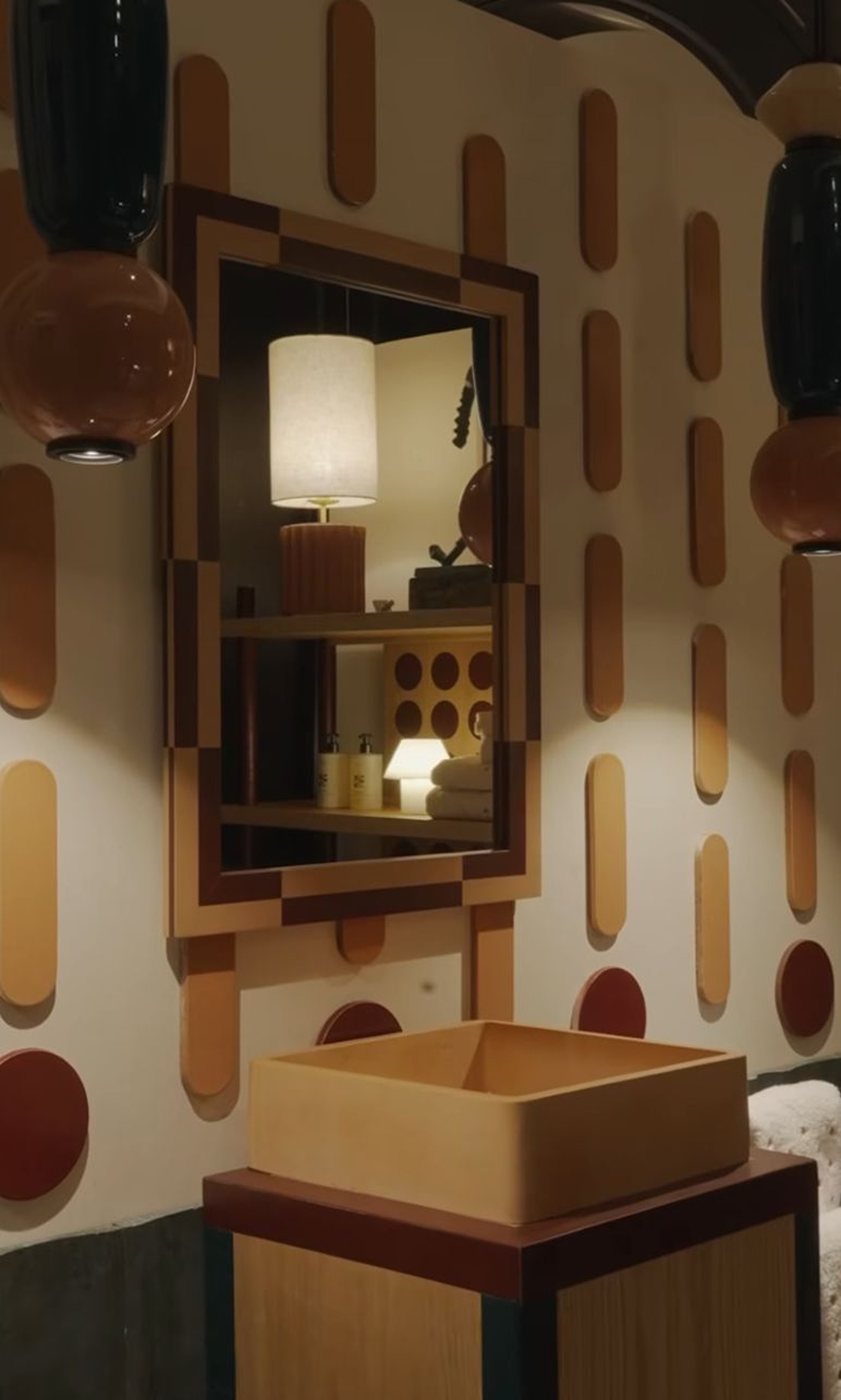
“Setups that you interact with on a daily basis, things that could be your home or a public space. Our focus was to show how lighting is part of every space, and how small products can transform it in ways you wouldn’t imagine.”
However, beyond the visual beauty of a space, there is also the emotion it evokes and the way a texture or material feels. This is where Abou-Zeid’s attention lay, focusing on the small spots that can make a space not just look different, but feel different too.
At every corner of the exhibition, there are artworks, pottery sculptures, and yellow and cream candle holders demonstrating that even the smallest space, or the tiniest detail, can radiate a bold personality when brought to life with light.
“We wanted to engage all the senses,” Abou-Zeid reflects. “It’s about creating spaces that feel alive, interactive, and deeply human. Every detail, every layer, every collaborator contributes to that. That’s what makes it so special.”
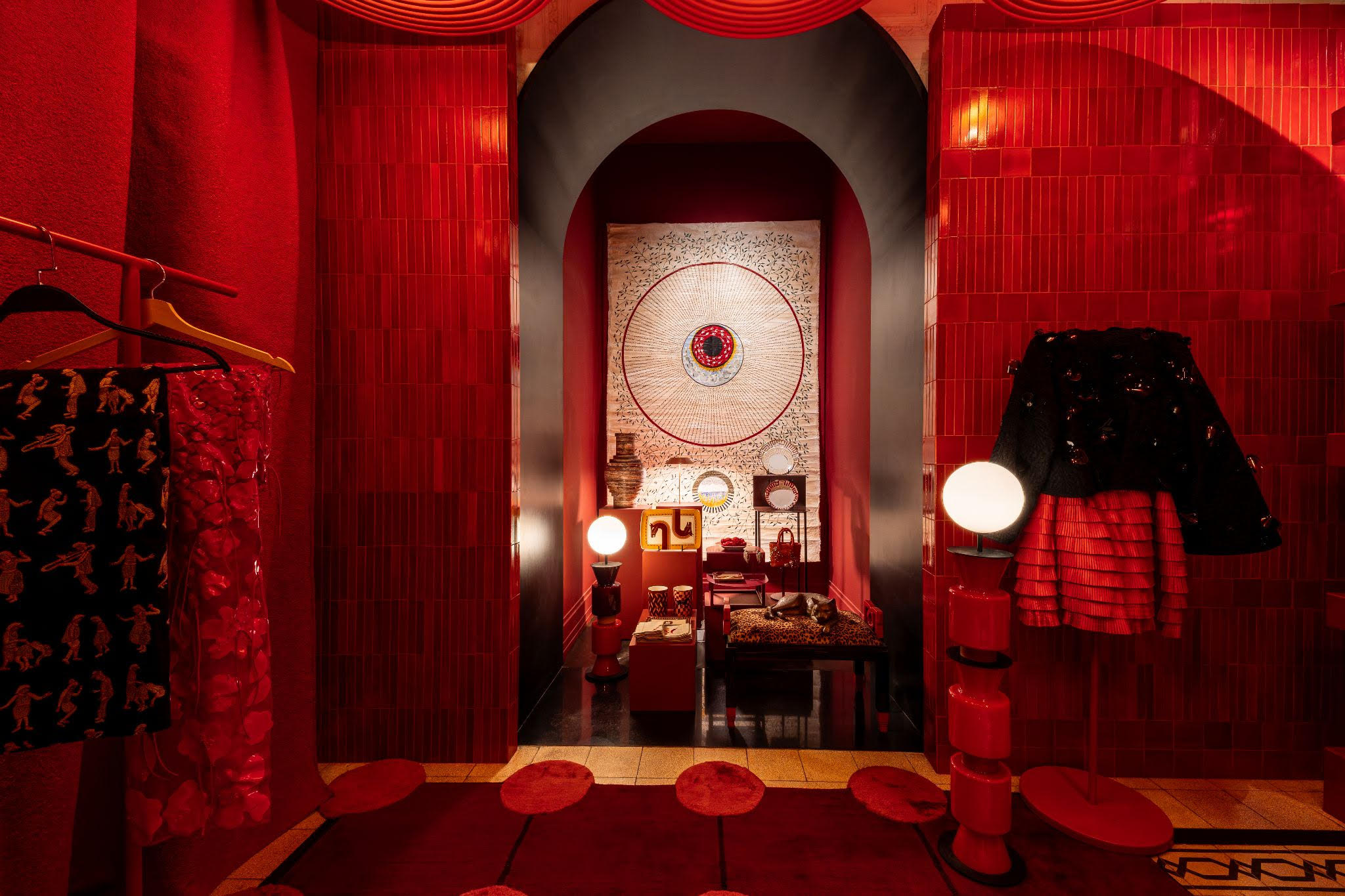


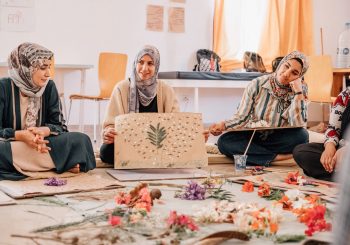
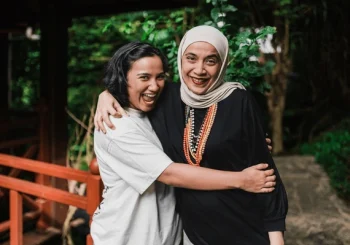

Comments (0)